Bitcoin Spot ETF: Physical Redemption vs. Cash Redemption: Which Method is More Advantageous?
On February 6, 2025, the U.S. Securities and Exchange Commission (SEC) accepted a rule change proposal submitted by the Nasdaq Stock Exchange aimed at modifying the rules for the iShares Bitcoin Trust (a Bitcoin spot ETF launched by BlackRock) to allow the physical transfer of Bitcoin into the trust. In other words, when investors choose to redeem their ETF investments, they will receive Bitcoin tokens directly instead of cash. Before delving into this proposal, let's first understand some basic concepts related to it.
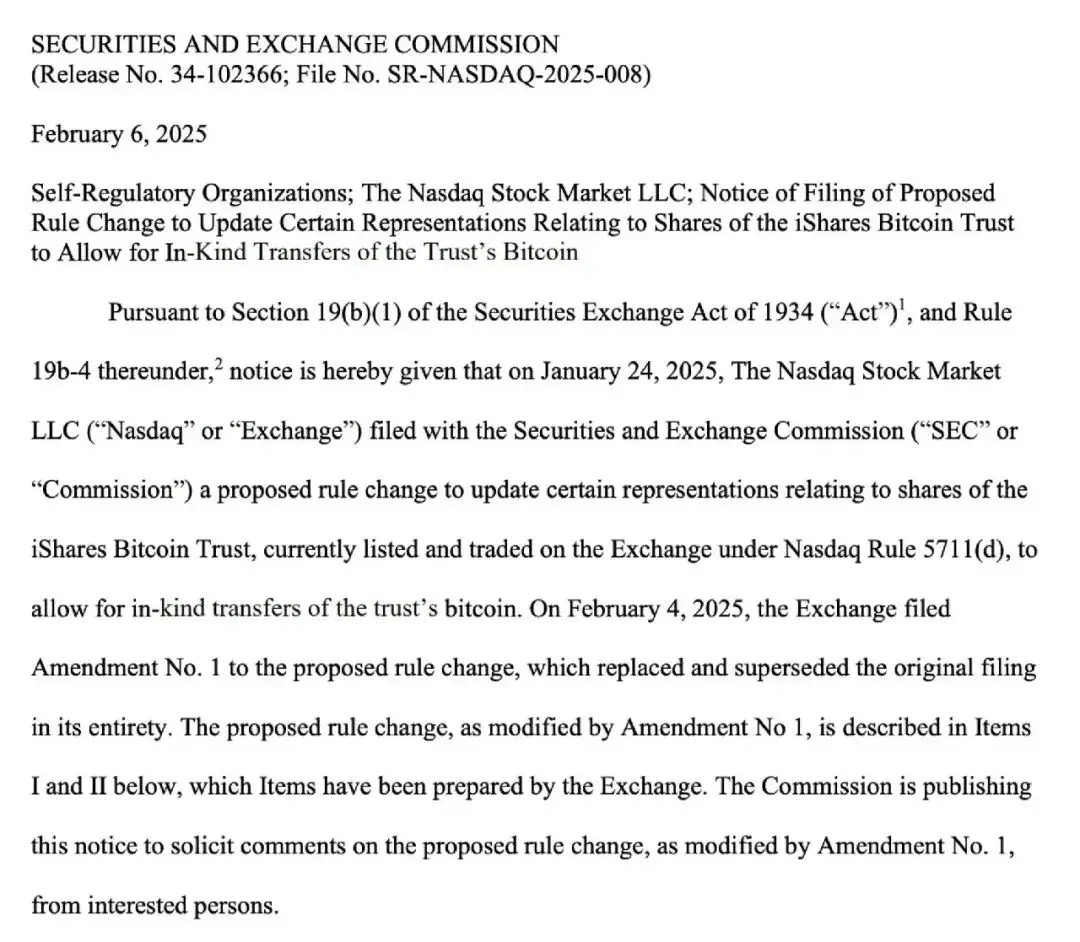
Source: SEC.GOV
Physical Redemption of ETFs
Physical redemption refers to the process where the fund company delivers the securities or other assets held by the fund directly to the redeeming investors instead of cash. When physical redemption is mentioned, investors might first think of gold. Gold and Bitcoin share some similarities: they both have exposure to underlying assets, can be traded on stock exchanges, and are used for portfolio diversification. The table below compares the similarities and differences between the physical redemption mechanisms of gold and Bitcoin. The conclusion is that the ultimate investors will receive the actual assets, although the process of asset redemption is slightly different.
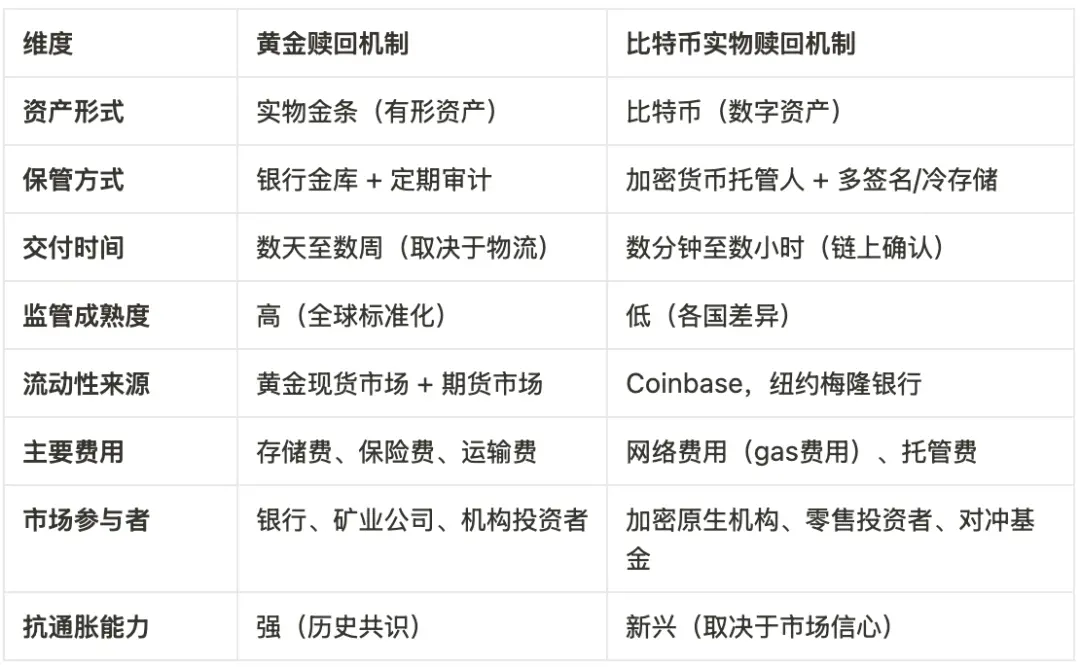
Source: BTX research
Redemption Methods
- Cash Redemption: Investors receive cash, which is the most common redemption method.
- Physical Redemption: Investors receive a portfolio of the fund's securities, applicable to certain types of funds (e.g., ETFs) or large redemptions.
- Redemption and Repurchase: Redeemed fund shares are converted into other fund products.
Redemption Timing
- T+1/T+2 Rule: Investors submit redemption requests on the trading day (T), usually confirmed on T+1, with funds or securities arriving on T+2.
- Large Redemptions: When redemption requests exceed 10% of the total fund shares, large redemption rules may be triggered, allowing the fund company to choose partial redemption or delay processing.
Redemption Fees
- Short-term Holding: Short-term holdings (e.g., less than 7 days) may incur higher fees (e.g., 1.5%).
- Long-term Holding: Long-term holdings (e.g., over one year) may not incur fees.
Redemption Restrictions
- Lock-up Period: Certain funds have lock-up periods during which investors cannot redeem.
- Minimum Redemption Amount: Fund companies may set a minimum redemption amount for each transaction.
What is an ETF?
An ETF (Exchange-Traded Fund) is an investment fund traded on stock exchanges, similar to individual stocks. It aims to track the performance of a specific index, commodity, industry, or other assets, allowing investors to gain diversified exposure without having to purchase each component individually. In recent years, with the popularity of digital assets like Bitcoin and Ethereum, digital asset ETFs have gradually appeared in the market.
Diversity of ETFs
Types of ETFs in the real world, especially in traditional finance:
- Index ETFs: Track specific indices, such as the S&P 500 or Nasdaq.
- Sector ETFs: Focus on specific sectors, such as technology or healthcare.
- Commodity ETFs: Track the prices of commodities like gold, oil, or agricultural products.
- Bond ETFs: Invest in government or corporate bonds.
- International ETFs: Provide investment opportunities in foreign markets.
- Thematic ETFs: Focus on specific trends or themes, such as clean energy or artificial intelligence.
- Inverse ETFs: Aim to profit from declines in the value of the underlying assets.
- Leveraged ETFs: Use financial derivatives to amplify the returns (and risks) of the underlying index.
ETFs Designed for Digital Assets
Bitcoin Spot ETF
A Bitcoin spot ETF directly holds Bitcoin as its underlying asset. The value of ETF shares is linked to the real-time market price of Bitcoin. Investors are directly exposed to the price fluctuations of Bitcoin without having to manage private keys or wallets.
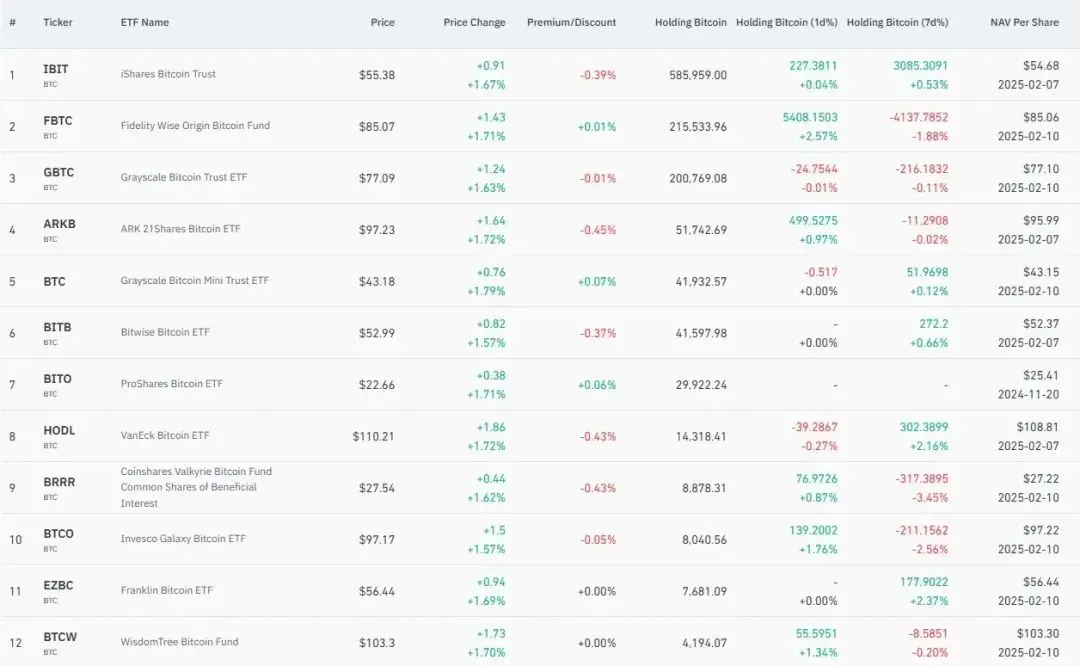
Source: coinglass
Fees
Purchasing an ETF incurs fees, which are primarily paid to the fund manager managing the fund.
The table below lists the relevant fees for Bitcoin ETFs:
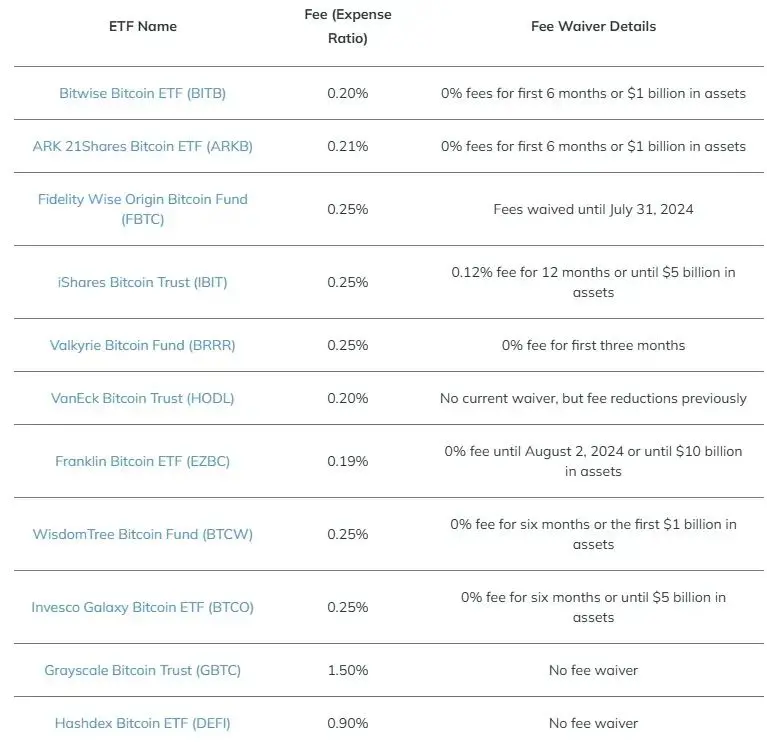
Source: Stashaway
Mechanism of Bitcoin Spot ETF
The issuer purchases and holds Bitcoin and associates ETF shares with the held Bitcoin.
Bitcoin Futures ETF
A Bitcoin futures ETF does not directly hold Bitcoin but invests in Bitcoin futures contracts, which are agreements to buy or sell Bitcoin at a predetermined price and date. Due to the nature of futures contracts, these ETFs may not perfectly track the spot price of Bitcoin.
Mechanism of Bitcoin Futures ETF
The ETF tracks the prices of Bitcoin futures contracts traded on regulated exchanges (such as the Chicago Mercantile Exchange CME).
Mixed Crypto ETF
An ETF that holds Bitcoin, other cryptocurrencies, and blockchain-related stocks.
Potential Impact of the Proposal
In traditional ETF redemption methods, when investors request to redeem assets, fund managers need to sell assets in the market to convert them into cash, which is then returned to investors. This process can lead to some negative situations:
- Liquidity Risk: During the redemption process, the fund needs to sell assets in the market to obtain cash to repay investors. This selling pressure can increase market volatility and trigger price fluctuations.
- Transaction Costs: Transaction costs are incurred during the redemption process.
- Taxes: When converting assets into cash, the cash is treated as capital gains and taxed, with rates ranging from 0% to 37%.
As shown in the data below, the average daily on-chain holdings of spot Bitcoin are showing a positive slope, indicating that Bitcoin is becoming increasingly attractive. Currently, top spot ETFs hold a total of 1,209,710 Bitcoins. If an investor decides to redeem a large amount of Bitcoin, liquidity issues will arise (the fund needs to sell assets and return to the fund). However, if this proposal is approved, this issue will be perfectly resolved.
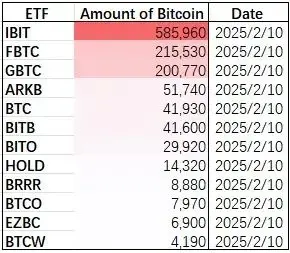
Source: Coinglass
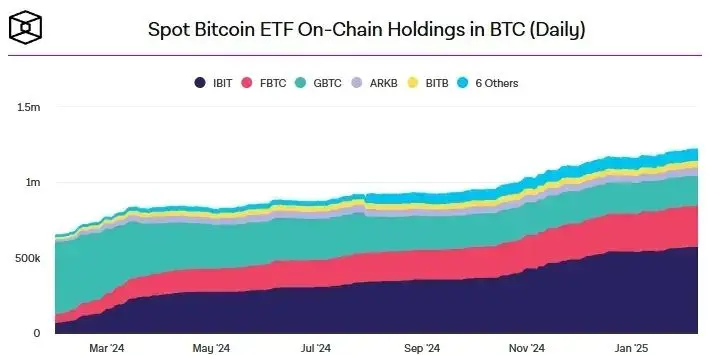
Source: The Block
Potential Effects
The U.S. Securities and Exchange Commission (SEC) has officially accepted the rule change proposal submitted by Nasdaq, which could have a significant impact on Bitcoin ETFs (especially the iShares Bitcoin Spot ETF). This proposal allows Bitcoin to be traded through "physical transfer" instead of the traditional cash redemption method. In other words, investors will be able to directly exchange ETF shares for Bitcoin spot without going through cash transactions to buy or redeem, which will enhance trading efficiency, reduce costs, and make it easier for more traditional financial market participants to enter the Bitcoin market.
From an investor's perspective, adopting physical transfer can avoid unnecessary cash flow losses caused by market volatility and may bring greater liquidity to the market. This method is similar to the direct exchange of stocks or other assets in traditional ETFs, rather than using cash as a substitute as many Bitcoin ETF proposals do. Therefore, if this proposal is approved, it could attract more institutional funds into the Bitcoin market and bring Bitcoin investments closer to traditional investment tools.
Previously, the SEC tended to adopt a cash redemption model when reviewing Bitcoin spot ETFs and rejected several proposals that included physical transfer. The acceptance of this change means that the SEC is reassessing its position on Bitcoin ETFs, particularly considering that this change could promote compliance in the crypto market and drive the integration of traditional financial markets. However, this change is still in the public comment phase, so there is uncertainty about whether it will ultimately be approved.
In summary, if this rule change is passed, it will provide retail investors with a more convenient way to enter the market. This move is likely to bring in more new capital into ETFs, increase the number of active addresses, and subsequently drive up Bitcoin prices. Ultimately, it will also pave the way for more substantial institutional funds to enter the Bitcoin market.
References
https://www.sec.gov/files/rules/sro/nasdaq/2025/34-102366.pdf
https://www.theblock.co/data/crypto-markets/bitcoin-etf
https://www.coinglass.com/bitcoin-etf
https://www.stashaway.hk/r/top-bitcoin-etfs
Disclaimer This article and related content are for informational purposes only and do not constitute any form of investment advice, financial advice, legal opinion, or other professional consultation. All information is based on publicly available data and general analysis, which may be inaccurate, incomplete, or outdated. Investors should independently assess their circumstances and make cautious decisions.









